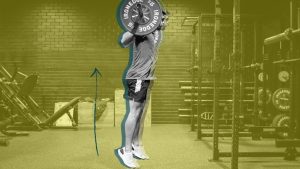Athletes are always looking to elevate their game, this includes individual skill sessions, team training sessions, strength and conditioning and recovery. Often in their pursuit of improving their performance through these different avenues, they can end up overworking themselves, leading to injury, fatigue, and a lower level of performance.
From a strength and conditioning perspective, creating strong, fast, and resilient athletes is the goal, but doing so without overworking the athletes is often the challenge. This is where velocity-based training can be of assistance.
Velocity Based Training (VBT) has been around for decades, however due to the recent advancement in technologies, it has become a lot more widespread in its use across the professional and semi-professional sectors. In our Athlete Development Program, we utilize an app called MetricVBT, which provides easy and accurate velocity-based data. With this app, we can track the bar path of different exercises, such as a squat, power clean and bench press, and get the range of motion, and speed of the lift. This data can be used in a lot of different ways, below are the two main uses we find for our Velocity data in the gym:
- Increased Intent
Seeing real time feedback about the speed at which a rep was performed is shown to improve the velocity on subsequent repetitions. This shows that VBT data is an effective tool for increasing intent. An increased intent can improve performance, and adaptations following a lift as it culminates in improved muscle fiber recruitment which will benefit muscular power and strength.
The benefits of an increased intent go beyond a single session. Being able to track velocity data of an exercise across weeks and months can provide the athlete with the goal of matching or beating the previous week’s velocity. Using velocity as the goal rather than PBs in lifts is an effective way to keep the load during gym sessions steady, while still maximizing the athlete’s intent. This is a great tool, especially during season, when we want the athlete’s intent to be high, but without overtraining to achieve this.
2. Autoregulation
The second way we can use the velocity data is to regulate the intensity (weight) and the volume (sets and reps) dependent on how the athlete is feeling on the specific day. This is best explained using a red, orange and green zone. If your velocity in a specific lift is well below what it has been previously, due to fatigue, injury, or any other reason, this puts you in the red zone. When this occurs, it is best to decrease intensity or volume of the exercise so the athlete can continue to maximize their intent, without overextending themselves. While the athlete is fatigued, chasing the same volume and intensity as previous gym sessions will only lead to increased fatigue and risk of injury. VBT helps us to recognize when athletes are in the red zones, and adapt accordingly.

If there is no improvement in the velocity data from the previous week, this is the orange zone. When in the orange zone the best way forward is to keep load and volume the same as in the previous week or session and aim for improved velocity before progressing in volume or load. The green zone is when the velocity is increased from previous weeks, and this is when the intensity or volume can be increased to keep the athlete’s intent high, and to keep targeting the same power and strength qualities.
VBT has been a great tool in our gym for these reasons. If you want to know more about VBT, and how it can help your training, ring up and find out more about our Athlete Development Program.




